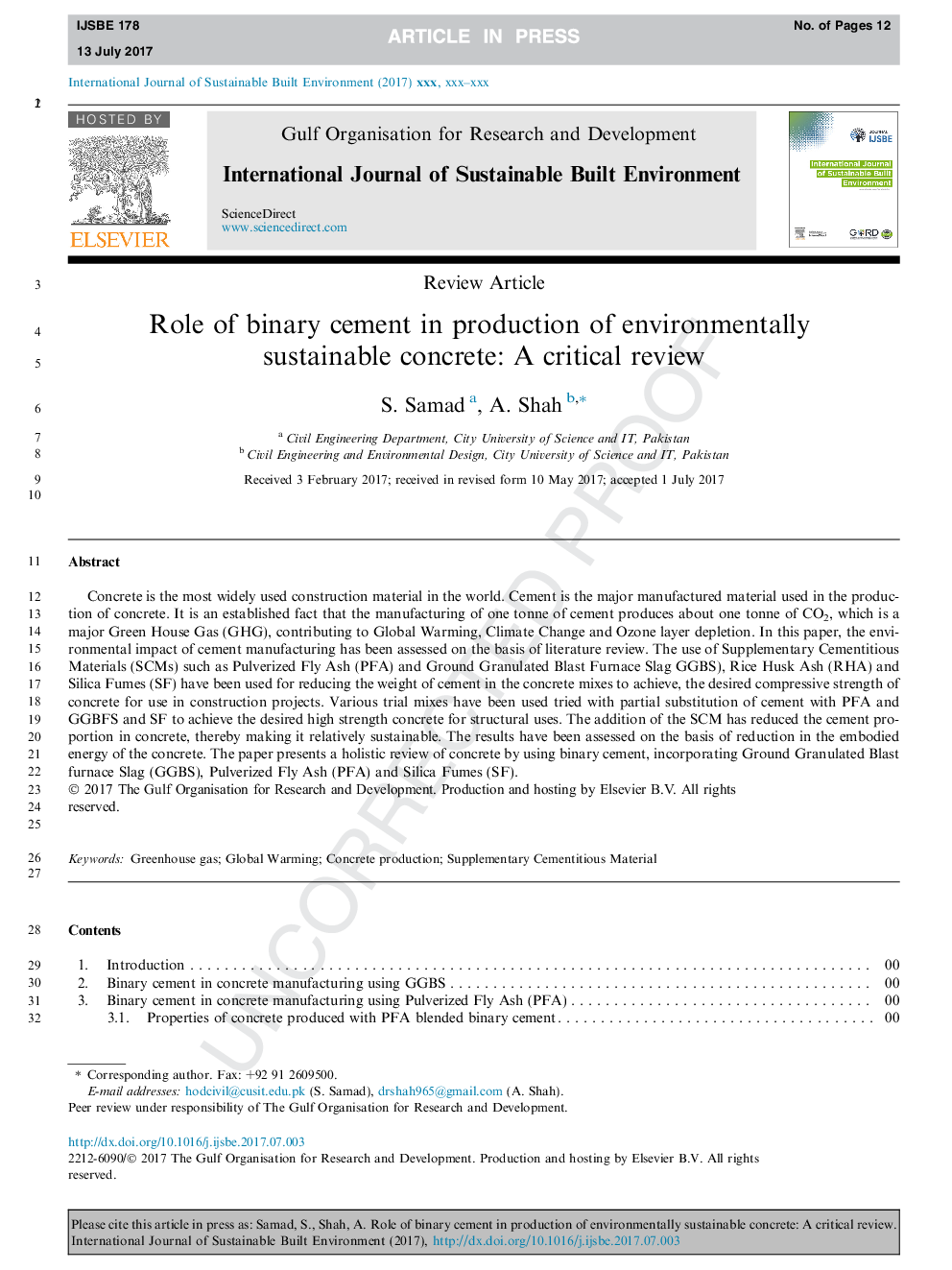| Article ID | Journal | Published Year | Pages | File Type |
|---|---|---|---|---|
| 6659516 | International Journal of Sustainable Built Environment | 2017 | 12 Pages |
Abstract
Concrete is the most widely used construction material in the world. Cement is the major manufactured material used in the production of concrete. It is an established fact that the manufacturing of one tonne of cement produces about one tonne of CO2, which is a major Green House Gas (GHG), contributing to Global Warming, Climate Change and Ozone layer depletion. In this paper, the environmental impact of cement manufacturing has been assessed on the basis of literature review. The use of Supplementary Cementitious Materials (SCMs) such as Pulverized Fly Ash (PFA) and Ground Granulated Blast Furnace Slag (GGBS), Rice Husk Ash (RHA) and Silica Fumes (SF) have been used for reducing the weight of cement in the concrete mixes to achieve, the desired compressive strength of concrete for use in construction projects. Various trial mixes have been used with partial substitution of cement with PFA and GGBFS and SF to achieve the desired high strength concrete for structural uses. The addition of the SCM has reduced the cement proportion in concrete, thereby making it relatively sustainable. The results have been assessed on the basis of reduction in the embodied energy of the concrete. The paper presents a holistic review of concrete by using binary cement, incorporating Ground Granulated Blast furnace Slag (GGBS), Pulverized Fly Ash (PFA) and Silica Fumes (SF).
Related Topics
Physical Sciences and Engineering
Chemical Engineering
Chemical Engineering (General)
Authors
S. Samad, A. Shah,
